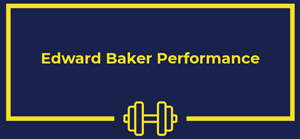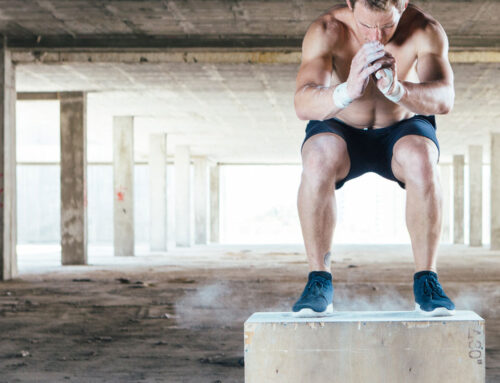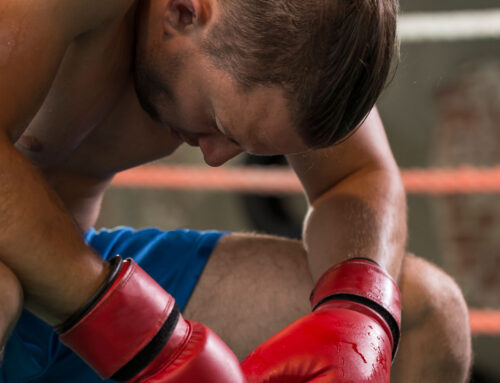
There is no getting around it, all other things being equal (technique, desire etc) the stronger fighter should win. Despite this self-evident fact, the argument is still raging over whether martial artists from boxers to BJJ to MMA should focus on getting stronger, which for most people means “should fighters lift weights?”
It may be harder for some people to connect the dots between lifting weights and performance in a boxing ring, and I’ll save that article for another time. However, if you have ever stepped onto a mat to grapple with someone significantly stronger than you (regardless of their weight, which I will get to) then you will know that strong people are a handful even if they are less experienced than you and whilst the sight of them straining to deadlift 600lbs on Instagram doesn’t worry you, their ability to toss you around like a dog’s favourite chew toy should.
Why do some people frown on strength training?
This is a good question, and there may be more than one answer. In the past 50 years or more, the explosion of bodybuilding training that actively splits the body up into individual parts and emphasises hypertrophy – muscle size – over strength and performance may be one such answer. It is possible that many people confuse bodybuilding style weight training with training to improve performance, certainly the internet is awash with examples of bulky, muscular guys getting tapped by smaller, more technical fighters.
This doesn’t mean weight training is bad for fighters, it just means that athletes and coaches need to know WHAT TYPE of training works best. Fortunately, we know from decades of research and examples from many other sports that athletes can dramatically increase their strength and power without gaining excess bodyweight and without sacrificing fitness.
Why not MMA?
Gymnasts, Olympic Weightlifters, Olympic Rowers and Professional Rugby League Players are all examples of athletes who use resistance training to achieve high levels of strength and power whilst competing in weight-controlled sports. In the case of Rowing and Rugby League, these sports also demand high levels of aerobic conditioning, without compromising the ability to generate force against a high external resistance – the water or the opposing player in a tackle.
Elite Rugby League forwards weigh 105kg/230lbs, sprint at 10 metres per second and tolerate impacts of up to 40G in collisions. Frequent strength training is ingrained in the culture of Rugby League and I believe it should be within MMA too.
Whilst elite MMA and elite Rugby League are obviously different, especially in terms of duration and the amount of running required, the contact element is useful in explaining the value of strength. If you want to steamroll into your opponent, pick them up, smash them into the ground and not get tired doing it, I suggest you become very strong, as it will only open up MORE opportunities for you to express your technical and tactical skills, not fewer.
Do I need to lift weights to get strong?
The short answer to this is Yes, you probably do.
“But isn’t strength on the mat a different kind of strength to the kind you build in the gym?”
No. Strength is overcoming an external resistance – 100kg of iron on a bar is an external resistance, as is 100kg of heavyweight MMA fighter. The fighter has the advantage of interfering with you as you try to pick him up, so you’d better be comfortable picking up 200kg for multiple reps, preferably on your shoulders while you squat up and down with it several times.
“But I know a guy who’s really strong in the gym and I can tap him out easy”
The point is not to replace MMA training with strength training, but to ADD more force potential to everything you already do, so that it makes fighting easier.
Being stronger means better endurance
Yes, you read that correctly. Think about it – if you are fighting at middleweight in MMA (185lbs/84kg) and your best lifts are a back squat of 100kg and a bench press of 90kg, the weight of your opponent is close to your max. If, on the other hand, your best squat is 160kg and your best bench 120kg, at the same bodyweight, now your opponent represents a much smaller fraction of your maximal effort and therefore every time you clinch with them, manipulating them will tire you less because you have so much more strength in reserve.
Not to mention the muscular, tendon and ligament adaptations which will occur as you take your lifts from average to savage. Hard, dense muscle tissue is more resilient to strikes, thicker tendons and ligaments protect you from injury and greater strength in your back and hips allows you to increase your punch, kick and takedown speed into the bargain.
“What about functional training like sandbags, bodyweight training and pushing cars?”
All this stuff works; wherever you can apply maximal force, you can become stronger. If you live on a farm and can spend your days hoisting 400lb hay bales, carrying 10-gallon jerry cans 5 miles across the fields and dragging that wounded steer out of a fast-flowing river, more power to you. Enjoy your rugged strength and enormous hands. Remember to invite me round for an outdoor session.
Meanwhile, barbell training allows you to fine tune your strength training by selecting the appropriate level of external resistance and incrementally increasing it over time to drive your performance forward. The variety of ways to train with a barbell is virtually endless, if you know how.
How do I start increasing my strength for MMA today?
I recommend using an appropriate version of a basic compound barbell lift that allows you to lift a large (for you) external resistance through an appropriate range of motion and crucially, allows you room to improve.
For this reason I recommend in a typical week you perform each of the following at least once:
- A squat
- A deadlift
- An upper body press
- An upper body pull
- A loaded carry
- Fight specific injury prevention such as neck training
For the basic barbell exercises, I recommend 4 to 8 sets of 3 to 6 reps, never training to failure. Strength training should be undertaken 2-4 days per week and need not last more than 45 minutes per session.
Do you want to achieve world class levels of strength and dominate opponents? Visit my YouTube channel for fight specific videos, subscribe to my newsletter for regular free content and to work with me email info@edbakerperformance.com
About the author : Edward Baker

Edward Baker is a University Lecturer, Researcher and Strength and Conditioning Coach with over 15 years’ experience working in elite sport.



